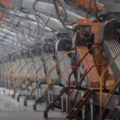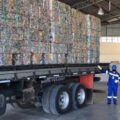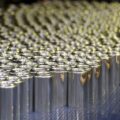BRAZILIAN ASSOCIATION UPDATES ITS TECHNICAL STANDARDS ON ALUMINUM
The Brazilian Association of Technical Standards announced the new norm that seeks to guarantee minimum standards so that buyers can count on an excellent product, not only to manufacturers and extruders. This document is intended to guarantee the minimum standards for both manufacturers and outsourcers.
The work on aluminum was developed under the scope of the Brazilian Committee and management is the responsibility of the Brazilian Aluminum Association. Last October, the new version of ABNT NBR 16266:2022, Aluminum alloys – Homogenized billets of 6xxx series alloys for the production of extruded products, was published by the Brazilian Association of Technical Standards (ABNT).
The review lasted two years and was coordinated by José Sakae Nagatsuyu at the Extruded Products Study Commission (EC) of the Brazilian Aluminum Committee (ABNT/CB-035), managed by the Brazilian Aluminum Association (ABAL). According to Sakae, the main objective of the update was to adjust the parameters according to quality standards and to insert analysis methods and criteria used by major billet and extruder manufacturers.
“The first edition, in 2014, was developed by a smaller group of companies, in an unprecedented way, because there was no international standard as a reference. In 2020, I challenged the other EC members to revise the entire content to adapt it to our reality. It was a lot of work, but the group did not lose focus and we managed to finalize it,” said the coordinator.
Eloana, an analyst from ABAL’s Technical Department who collaborates with the ABNT/CB-035 secretariat, explains that the technical standards undergo a systematic analysis every five years to see if they are being updated because we are in development. “The review of standards, in general, is part of the continuous improvement process and brings benefits related to quality, competitiveness, health, safety and others,” Eloana emphasized.
Silvio Dela Dea, secretary of the EC clarified that ABNT NBR 16266:2022 is composed of several stages. “Among the stages, the most discussed and updated parameters were reflow layer, reverse segregation, porosity, grain size, phase transformation, dimensional and surface finish, among others. In addition, the hardness parameter, which did not exist, has been included to adapt it to new technologies and market requirements,” he reiterated.
In addition, he clarified that “among the stages, the most discussed and updated parameters were the reflow layer, reverse segregation, porosity, grain size, phase transformation, dimensional and surface finish, among others. In addition, the hardness parameter, which did not exist, has been included to adapt it to new technologies and market requirements”.
According to the EC secretary, the consumer market will benefit from the quality of the billet, within the technical requirements demanded to obtain an extruded product that meets the needs of extruders and their end consumers.
In practice, the quality of the billet provides good performance and productivity during the profile extrusion process, and helps to achieve the required mechanical properties for the final application. The aluminum alloy profiles of the 6xxx series are used in the most diverse segments, such as transportation, civil construction and consumer goods.














